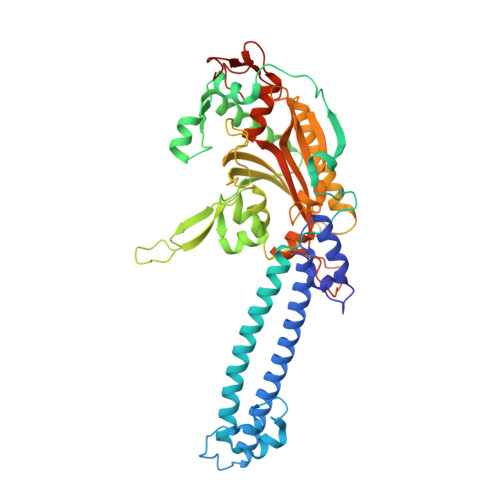Crystal Structure of Human Seryl-tRNA Synthetase and Ser-SA Complex Reveals a Molecular Lever Specific to Higher Eukaryotes.
Xu, X., Shi, Y., Yang, X.L.(2013) Structure 21: 2078-2086
- PubMed: 24095058
- DOI: https://doi.org/10.1016/j.str.2013.08.021
- Primary Citation of Related Structures:
4L87 - PubMed Abstract:
Seryl-tRNA synthetase (SerRS), an essential enzyme for translation, also regulates vascular development. This "gain-of-function" has been linked to the UNE-S domain added to vertebrate SerRS during evolution. However, the significance of two insertions also specific to higher eukaryotic SerRS remains elusive. Here, we determined the crystal structure of human SerRS in complex with Ser-SA, an aminoacylation reaction intermediate analog, at 2.9 Å resolution. Despite a 70 Å distance, binding of Ser-SA in the catalytic domain dramatically leverages the position of Insertion I in the tRNA binding domain. Importantly, this leverage is specific to higher eukaryotes and not seen in bacterial, archaeal, and lower eukaryotic SerRSs. Deletion of Insertion I does not affect tRNA binding but instead reduce the catalytic efficiency of the synthetase. Thus, a long-range conformational and functional communication specific to higher eukaryotes is found in human SerRS, possibly to coordinate translation with vasculogenesis.
- Departments of Chemical Physiology and Cell and Molecular Biology, The Scripps Research Institute, 10550 North Torrey Pines Road, La Jolla, CA 92037, USA; Institute of Aging Research, School of Medicine, Hangzhou Normal University, Hangzhou, Zhejiang Province 310036, China.
Organizational Affiliation:



















